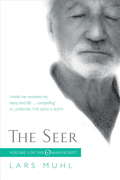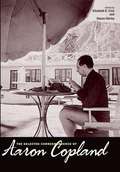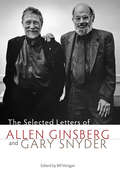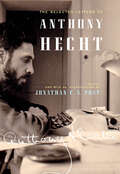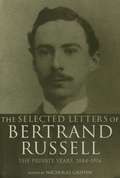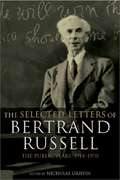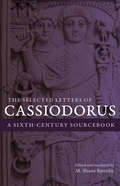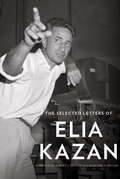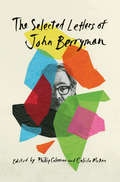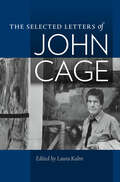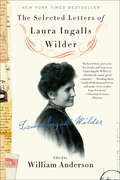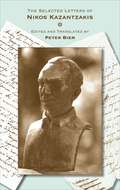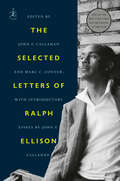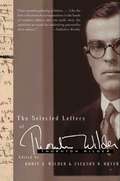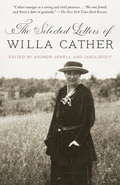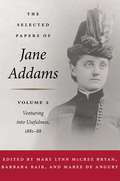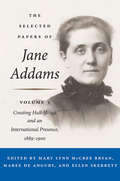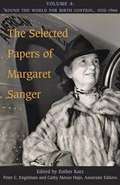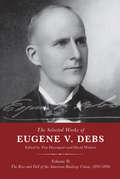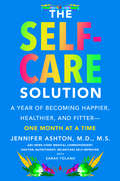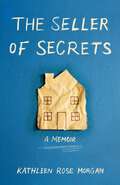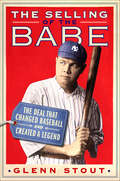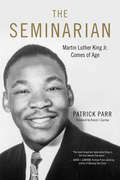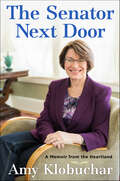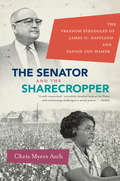- Table View
- List View
The Seer
by Lars MuhlThe Seer is a compelling account of one man's spiritual awakening, written with extraordinary energy, candour and humility. The first of three books that together comprise 'The O Manuscript', it is the beginning of a personal and philosophical quest that challenges conventional wisdom and takes the reader on a mystical journey through ancient history and modern times. The book begins with the author at a crossroads, suffering from debilitating health, his personal and professional lives disintegrating around him. Bed-ridden for three years, Lars Muhl was put in touch with a seer who helped him, over the telephone initially, to recover his energy and brought him back to life. The Seer became his spiritual leader, teaching him the inner truths of existence. We travel with him to Montsegur, a remote mountain village and castle in southern France, where he meets the Seer and begins his remarkable and challenging adventure. The book is not only a spellbinding introduction to the ancient vision of cosmic interconnectedness, but also a critical evaluation of a long list of limiting New Age dogmas.When Lars and the Seer part, the latter hands an old manuscript into the author's care - a doorway to further revelations.
The Selected Correspondence of Aaron Copland
by Aaron Copland Wayne Shirley Elizabeth Bergman CristThis is the first book devoted to the correspondence of composer Aaron Copland, covering his life from age eight to eighty-seven. The chronologically arranged collection includes letters to many significant figures in American twentieth-century music as well as Copland's friends, family, teachers, and colleagues. Selected for readability, interest, and the light they cast upon the composer's thoughts and career, the letters are carefully annotated and each published in its entirety. Copland was a gifted and natural letter writer who revealed much more about himself in his letters than in formal writings in which he was conscious of his position as spokesman for modern music. The collected letters offer insights into his music, personality, and ideas, along with fascinating glimpses into the lives of such other well-known musicians as Leonard Bernstein, Carlos Chávez, William Schuman, and Virgil Thomson.
The Selected Letters of Allen Ginsberg and Gary Snyder, 1956-1991
by Allen Ginsberg Gary SnyderOne of the central relationships in the Beat scene was the long–lasting friendship of Allen Ginsberg and Gary Snyder. Ginsberg introduced Snyder to the East Coast Beat writers, including Jack Kerouac, while Snyder himself became the model for the serious poet that Ginsberg so wanted to become. Snyder encouraged Ginsberg to explore the beauty of the West Coast and, even more lastingly, introduced Ginsberg to Buddhism, the subject of so many long letter exchanges between them. Beginning in 1956 and continuing through 1991, the two men exchanged more than 850 letters. Bill Morgan, Ginsberg's biographer and an important editor of his papers, has selected the most significant correspondence from this long friendship. The letters themselves paint the biographical and poetic portraits of two of America's most important—and most fascinating—poets. Robert Hass' insightful introduction discusses the lives of these two major poets and their enriching and moving relationship.
The Selected Letters of Anthony Hecht
by Anthony HechtSpanning seven decades, these often intimate, brilliantly astute letters by the eminent poet Anthony Hecht reflect a body of work that influenced the history of twentieth-century American poetry.Pulitzer Prize-winning poet Anthony Hecht (1923–2004) was known not only for his masterful control of form and language but also for his wit and humor. With the help of Helen Hecht, the poet’s widow, Jonathan F. S. Post combed through more than 4,000 letters to produce an intimate look into the poet’s mind and art across a lifetime. The letters range from Hecht’s early days at summer camp to college at Bard, to the front lines of World War II, to travels abroad in France and Italy, to marriage, and to fame as a poet and critic. Along the way, Hecht corresponded with well-known poets such as John Hollander, James Merrill, Anne Sexton, and Richard Wilbur. Those interested in the lives of contemporary poets will read these highly personal letters with delight and surprise.
The Selected Letters of Bertrand Russell, Volume 1: The Private Years 1884-1914
by Nicholas GriffinThose who knew the famous philosopher Bertrand Russell at the turn of the century referred to him as 'the Day of Judgement'. This acclaimed selection of his early letters, available in paperback for the first time, reveals the full scope of Russell's life and innermost thoughts up to the First World War. It includes letters to his first wife, Alys Pearsall Smith, reveals the background to his now famous work in philosophy and the foundations of mathematics and how his mind was stirred by socialism, free trade and votes for women. It also contains letters on his famous affair with Ottoline Morrell, providing yet another insight into one of the great intellectual figures of the twentieth century.
The Selected Letters of Bertrand Russell, Volume 2: The Public Years 1914-1970
by Nicholas GriffinThis long-awaited second volume of Russell's best letters reveals the inner workings of a philosophical genius and an impassioned campaigner for peace and social reform. The letters, only three of which have been published before, cover most of Russell's adult life, a period in which he wrote over thirty books, including his famous History of Western Philosophy. Richly illustrated with photographs from Russell's life, the collection includes letters to Ho Chi Minh, Tito, Jawaharlal Nehru and Albert Einstein.
The Selected Letters of Cassiodorus: A Sixth-Century Sourcebook
by CassiodorusOne of the great Christian scholars of antiquity and a high-ranking public official under Theoderic, King of the Ostrogoths, Cassiodorus compiled edicts, diplomatic letters, and legal documents while in office. The collection of his writings, the Variae, remains among the most important sources for the sixth century, the period during which late antiquity transitioned to the early middle ages. Translated and selected by scholar M. Shane Bjornlie, The Selected Letters gathers the most interesting evidence from the Veriae for understanding the political culture, legal structure, intellectual and religious worldviews, and social evolution during the twilight of the late-Roman state. Bjornlie’s invaluable introduction discusses Cassiodorus’s work in civil, legal, and financial administration, revealing his interactions with emperors, kings, bishops, military commanders, private citizens, and even criminals. Section notes introduce each letter to contextualize its themes and connection with other letters, opening a window to Cassiodorus’s world.
The Selected Letters of Elia Kazan
by Elia KazanThis collection of nearly three hundred letters gives us the life of Elia Kazan unfiltered, with all the passion, vitality, and raw honesty that made him such an important and formidable stage director (A Streetcar Named Desire, Death of a Salesman), film director (On the Waterfront, East of Eden), novelist, and memoirist. Elia Kazan's lifelong determination to be a "sincere, conscious, practicing artist" resounds in these letters--fully annotated throughout--in every phase of his career: his exciting apprenticeship with the new and astonishing Group Theatre, as stagehand, stage manager, and actor (Waiting for Lefty, Golden Boy) . . . his first tentative and then successful attempts at directing for the theater and movies (The Skin of Our Teeth, A Tree Grows in Brooklyn) . . . his cofounding in 1947 of the Actors Studio and his codirection of the nascent Repertory Theater of Lincoln Center . . . his innovative and celebrated work on Broadway (All My Sons, Cat on a Hot Tin Roof, J.B.) and in Hollywood (Gentleman's Agreement, Splendor in the Grass, A Face in the Crowd, Baby Doll) . . . his birth as a writer. Kazan directed virtually back-to-back the greatest American dramas of the era--by Arthur Miller and Tennessee Williams--and helped shape their future productions. Here we see how he collaborated with these and other writers: Clifford Odets, Thornton Wilder, John Steinbeck, and Budd Schulberg among them. The letters give us a unique grasp of his luminous insights on acting, directing, producing, as he writes to and about Marlon Brando, James Dean, Warren Beatty, Robert De Niro, Boris Aronson, and Sam Spiegel, among others. We see Kazan's heated dealings with studio moguls Darryl Zanuck and Jack Warner, his principled resistance to film censorship, and the upheavals of his testimony before the House Committee on Un-American Activities. These letters record as well the inner life of the artist and the man. We see his startling candor in writing to his first wife, his confidante and adviser, Molly Day Thacher--they did not mince words with each other. And we see a father's letters to and about his children. An extraordinary portrait of a complex, intense, monumentally talented man who engaged the political, moral, and artistic currents of the twentieth century. From the Hardcover edition.
The Selected Letters of John Berryman
by John BerrymanA wide-ranging, first-of-its-kind selection of Berryman’s correspondence with friends, loved ones, writers, and editors, showcasing the turbulent, fascinating life and mind of one of America’s major poets.The Selected Letters of John Berryman assembles for the first time the poet’s voluminous correspondence. Beginning with a letter to his parents in 1925 and concluding with a letter sent a few weeks before his death in 1972, Berryman tells his story in his own words.Included are more than 600 letters to almost 200 people—editors, family members, students, colleagues, and friends. The exchanges reveal the scope of Berryman’s ambitions, as well as the challenges of practicing his art within the confines of the publishing industry and contemporary critical expectations. Correspondence with Ezra Pound, Robert Lowell, Delmore Schwartz, Adrienne Rich, Saul Bellow, and other writers demonstrates Berryman’s sustained involvement in the development of literary culture in the postwar United States. We also see Berryman responding in detail to the work of writers such as Carolyn Kizer and William Meredith and encouraging the next generation—Edward Hoagland, Valerie Trueblood, and others. The letters show Berryman to be an energetic and generous interlocutor, but they also make plain his struggles with personal and familial trauma, at every stage of his career.An introduction by editors Philip Coleman and Calista McRae explains the careful selection of letters and contextualizes the materials within Berryman’s career. Reinforcing the critical and creative interconnectedness of Berryman’s work and personal life, The Selected Letters confirms his place as one of the most original voices of his generation and opens new horizons for appreciating and interpreting his poems.
The Selected Letters of John Cage
by John CageThis annotated selection of more than five hundred letters by the groundbreaking composer and avant-garde icon covers every phase of his career. This volume reveals the intimate life of John Cage with all the intelligence, wit, and inventiveness that made him such an important composer and performer. The missives range from lengthy reports of his early trips to Europe in the 1930s through his years with the dancer Merce Cunningham. They shed new light on his growing eminence as an iconic performance artist of the American avant-garde. Written in Cage&’s singular voice—by turns profound, irreverent, and funny—these letters reveal Cage&’s passionate interest in people, ideas, and the arts. They include correspondence with Peter Yates, David Tudor, and Pierre Boulez, among many others. Readers will enjoy Cage's commentary about the people and events of a transformative time in the arts, as well as his meditations on the very nature of art. This volume presents an extraordinary portrait of a complex, brilliant man who challenged and changed the artistic currents of the twentieth century.
The Selected Letters of Laura Ingalls Wilder
by Laura Ingalls WilderNew York Times Bestseller: “Wilder’s letters display a writer who kept her head amid growing fame, remaining sweet, down-to-earth, and immensely likable.” —Publishers WeeklyAvailable for the first time, these letters of one of America’s most beloved authors are a treasure trove that offers new and unexpected understanding of her life and work. The Selected Letters of Laura Ingalls Wilder is a vibrant, deeply personal portrait of this revered American writer, illuminating her thoughts, travels, philosophies, career, and dealings with family, friends, and fans as never before—a fresh look at the adult life of the author in her own words. Gathered from museums and archives and personal collections, the letters span over sixty years of Wilder’s life, from 1894–1956, and shed new light on Wilder’s day-to-day life. Here we see her as a businesswoman and author—with insights into her beloved Little House books; her legendary editor, Ursula Nordstrom; and her readers—as a wife, and as a friend. In her letters, Wilder shares her philosophies, political opinions, and reminiscences of life as a frontier child. Also included are letters to her daughter, writer Rose Wilder Lane, who filled a silent role as editor and collaborator while the renowned Little House books were being written.Wilder biographer William Anderson collected and researched references throughout these letters and the result is an invaluable historical collection, tracing Wilder’s life through the final days of covered wagon travel; her life as a farm woman, a country journalist, and Depression-era author; and her years of fame as the writer of the Little House books. This collection is a wonderful accompaniment to her cherished books, and a snapshot of an era gone by.“In her letters, just as in her books and in person, Laura Ingalls Wilder is effortlessly sunny good company . . . wonderfully human letters.” —Christian Science Monitor“[Anderson] has done a heroic job of assembling, editing, and annotating this final collection of unpublished writing . . . Wilder fans will surely rejoice.” —Booklist
The Selected Letters of Nikos Kazantzakis (Princeton Modern Greek Studies #25)
by Nikos KazantzakisThe life of Nikos Kazantzakis—the author of Zorba the Greek and The Last Temptation of Christ—was as colorful and eventful as his fiction. And nowhere is his life revealed more fully or surprisingly than in his letters. Edited and translated by Kazantzakis scholar Peter Bien, this is the most comprehensive selection of Kazantzakis's letters in any language.One of the most important Greek writers of the twentieth century, Kazantzakis (1883–1957) participated in or witnessed some of the most extraordinary events of his times, including both world wars and the Spanish and Greek civil wars. As a foreign correspondent, an official in several Greek governments, and a political and artistic exile, he led a relentlessly nomadic existence, living in France, Czechoslovakia, Austria, Germany, Italy, Spain, the Soviet Union, and England. He visited the Versailles Peace Conference, attended the tenth-anniversary celebration of the Bolshevik Revolution, interviewed Mussolini and Franco, and briefly served as a Greek cabinet minister—all the while producing a stream of novels, poems, plays, travel writing, autobiography, and translations. The letters collected here touch on almost every aspect of Kazantzakis's rich and tumultuous life, and show the genius of a man who was deeply attuned to the artistic, intellectual, and political events of his times.
The Selected Letters of Ralph Ellison: The Selected Letters Of Ralph Ellison And Albert Murray (Modern Library Ser.)
by Ralph EllisonA radiant collection of letters from the renowned author of Invisible Man that trace the life and mind of a giant of American literature, with insights into the riddle of identity, the writer&’s craft, and the story of a changing nation over six decades These extensive and revealing letters span the life of Ralph Ellison and provide a remarkable window into the great writer&’s life and work, his friendships, rivalries, anxieties, and all the questions about identity, art, and the American soul that bedeviled and inspired him until his death. They include early notes to his mother, written as an impoverished college student; lively exchanges with the most distinguished American writers and thinkers of his time, from Romare Bearden to Saul Bellow; and letters to friends and family from his hometown of Oklahoma City, whose influence would always be paramount. These letters are beautifully rendered first-person accounts of Ellison&’s life and work and his observations of a changing world, showing his metamorphosis from a wide-eyed student into a towering public intellectual who confronted and articulated America&’s complexities.
The Selected Letters of Thornton Wilder
by Thornton Wilder Robin Gibbs Wilder Jackson R. BryerThe author of such classics as Our Town and The Bridge of San Luis Rey, Thornton Wilder was a born storyteller and dramatist-rare talents on glorious display in this volume of more than three hundred letters he penned to a vast array of famous friends and beloved relatives. Through Wilder's correspondence, readers can eavesdrop on his conversations with Ernest Hemingway, F. Scott Fitzgerald, Gertrude Stein, NoËl Coward, Gene Tunney, Laurence Olivier, Aaron Copland, Paul Hindemith, Leonard Bernstein, Edward Albee, and Mia Farrow. Equally absorbing are Wilder's intimate letters to his family. Wilder tells of roller-skating with Walt Disney, remembers an inaugural reception for FDR at the White House, describes his life as a soldier in two World Wars, and recalls dining out with Montgomery Clift and Elizabeth Taylor. In these pages, Thornton Wilder speaks for himself in his own unique, enduring voice-informing, encouraging, instructing, and entertaining with his characteristic wit, heart, and exuberance.
The Selected Letters of Willa Cather
by Willa Cather Janis Stout Andrew Jewell<P>This first publication of the letters of one of America's most consistently admired writers is both an exciting and a significant literary event. <P>Willa Cather, wanting to be judged on her work alone, clearly forbade the publication of her letters in her will. <P>But now, more than sixty-five years after her death, with her literary reputation as secure as a reputation can be, the letters have become available for publication. <P>The 566 letters collected here, nearly 20 percent of the total, range from the funny (and mostly misspelled) reports of life in Red Cloud in the 1880s that Cather wrote as a teenager, through those from her college years at the University of Nebraska, her time as a journalist in Pittsburgh and New York, and during her growing eminence as a novelist. <P>Postcards and letters describe her many travels around the United States and abroad, and they record her last years in the 1940s, when the loss of loved ones and the disasters of World War II brought her near to despair. <P>Written to family and close friends and to such luminaries as Sarah Orne Jewett, Robert Frost, Yehudi Menuhin, Sinclair Lewis, and the president of Czechoslovakia, Thomas Masaryk, they reveal her in her daily life as a woman and writer passionately interested in people, literature, and the arts in general. <P>The voice heard in these letters is one we already know from her fiction: confident, elegant, detailed, openhearted, concerned with profound ideas, but also at times funny, sentimental, and sarcastic. <P>Unfiltered as only intimate communication can be, they are also full of small fibs, emotional outbursts, inconsistencies, and the joys and sorrows of the moment. <P>The Selected Letters is a deep pleasure to read and to ponder, sure to appeal to those with a special devotion to Cather as well as to those just making her acquaintance.
The Selected Papers of Jane Addams: Venturing into Usefulness
by Jane Addams Barbara Bair Maree De Angury Mary Lynn BryanVenturing into Usefulness, the second volume of The Selected Papers of Jane Addams, documents the experience of this major American historical figure, intellectual, social activist, and author between June 1881, when at twenty-one she had just graduated from Rockford Female Seminary, and early 1889, when she was on the verge of founding the Hull-House settlement with Ellen Gates Starr. During these years she evolved from a high-minded but inexperienced graduate of a women's seminary into an educated woman and seasoned traveler well-exposed to elite culture and circles of philanthropy. Themes inaugurated in the previous volume are expanded here, including dilemmas of family relations and gender roles; the history of education; the dynamics of female friendship; religious belief and ethical development; changes in opportunities for women; and the evolution of philanthropy, social welfare, and reform ideas.
The Selected Papers of Jane Addams: Vol. 3: Creating Hull-House and an International Presence, 1889-1900
by Jane Addams Maree De Angury Mary Lynn BryanIn 1889 an unknown but determined Jane Addams arrived in the immigrant-burdened, politically corrupt, and environmentally challenged Chicago with a vision for achieving a more secure, satisfying, and hopeful life for all. Eleven years later, her œscheme, as she called it, had become Hull-House and stood as the template for the creation of the American settlement house movement while Addams's writings and speeches attracted a growing audience to her ideas and work. The third volume in this acclaimed series documents Addams's creation of Hull-House and her rise to worldwide fame as the acknowledged female leader of progressive reform. It also provides evidence of her growing commitment to pacifism. Here we see Addams, a force of thought, action, and commitment, forming lasting relationships with her Hull-House neighbors and the Chicago community of civic, political, and social leaders, even as she matured as an organizer, leader, and fund-raiser, and as a sought after speaker, and writer. The papers reveal her positions on reform challenges while illuminating her strategies, successes, and responses to failures. At the same time, the collection brings to light Addams's private life. Letters and other documents trace how many of her Hull-House and reform alliances evolved into deep, lasting friendships and also explore the challenges she faced as her role in her own family life became more complex. Fully annotated and packed with illustrations, The Selected Papers of Jane Addams, Volume 3 is a portrait of a woman as she changed and as she changed history.
The Selected Papers of Margaret Sanger, Volume 4: Round the World for Birth Control, 1920-1966
by Margaret Sanger Cathy Moran Hajo Esther Katz Peter C. EngelmanWhen Margaret Sanger returned to Europe in 1920, World War I had altered the social landscape as dramatically as it had the map of Europe. Population concerns, sexuality, venereal disease, and contraceptive use had entered public discussion, and Sanger's birth control message found receptive audiences around the world. This volume focuses on Sanger from her groundbreaking overseas advocacy during the interwar years through her postwar role in creating the International Planned Parenthood Federation. The documents reconstruct Sanger's dramatic birth control advocacy tours through early 1920s Germany, Japan, and China in the midst of significant government and religious opposition to her ideas. They also trace her tireless efforts to build a global movement through international conferences and tours. Letters, journal entries, writings, and other records reveal Sanger's contentious dealings with other activists, her correspondence with the likes of Albert Einstein and Eleanor Roosevelt, and Sanger's own dramatic evolution from gritty grassroots activist to postwar power broker and diplomat.
The Selected Works of Eugene V. Debs, Volume II: The Rise and Fall of the American Railway Union, 1892–1896
by Eugene V. DebsThe second volume of essays and speeches from an early leader of the labor movement, who &“turned a radical creed into a deeply American one&” (The New Yorker). Tim Davenport and David Walters have extracted the essential core of Debs&’s life work, illustrating his intellectual journey from conservative editor of the magazine of a racially segregated railway brotherhood to his role as the public face and outstanding voice of social revolution in early twentieth-century America. Well over 1,000 Debs documents will be republished as part of this monumental project, the vast majority seeing print again for the first time since the date of their original publication.Eugene V. Debs (1855–1926) was a trade unionist, magazine editor, and public orator widely regarded as one of the most important figures in the history of American socialism. &“Tim Davenport and David Walters have given us, as they did with the first volume of the series, a real treasure, and a restoration.&” —Paul Buhle, for DSAUSA.org &“Gene Debs tirelessly urged the self-organization of working people in the United States as their only sure road to freedom. His role in the formation of the Socialist Party particularly provides lessons for our day.&” —Mark Lause, author of The Great Cowboy Strike
The Self-Care Solution: A Year of Becoming Happier, Healthier, and Fitter—One Month at a Time
by Jennifer Ashton Sarah TolandABC’s chief medical correspondent helps you ring in the New Year right with a resolution that’s actually doable: a year-long plan to improve your emotional and physical health—from giving up alcohol to doing a digital detox, but each for only one month.Dr. Jennifer Ashton is at the top of her field as an ob-gyn and news correspondent. But even at the top there’s still room to improve, and with The Self-Care Solution, she upends her life one month at a time, using her own experiences to help you improve your health and enhance your life.Dr. Ashton becomes both researcher and subject as she focuses on twelve separate challenges. Beginning with a new area of focus each month, she guides you through the struggles she faces, the benefits she experiences, and the science behind why each month’s challenge—giving up alcohol, doing more push-ups, adopting an earlier bedtime, limiting technology—can lead to better health. Month by month, Dr. Ashton tackles a different area of wellness with the hope that the lessons she learns and the improved health she experiences will motivate her (and you) to make each change permanent. Throughout, she offers easy-to-comprehend health information about the particular challenge to help you understand its benefits and to stick with it. Whether it’s adding cardio or learning how to meditate, Dr. Ashton makes these daily lifestyle choices and changes feel possible—and shows how beneficial a mindful lifestyle can be.Inspiring, practical, and informative, illustrated with helpful photos and charts, The Self-Care Solution teaches you how to recalibrate your life to enjoy a better, healthier year, one month at a time. Featuring guidance from top experts, entertaining case studies, easy-to-follow advice and tips, and Dr. Ashton’s observations and insights, this book can help you achieve a better life balance and a more active and healthy lifestyle.
The Seller of Secrets: A Memoir
by Kathleen Rose MorganMother was an emotionally damaged woman shrouded in depression and dark secrets. Father was a man plagued by alcoholism who lived in a state of drunken evasion for many years before jumping ship. Kathleen Rose Morgan was born into this troubled family and merged with a community plagued by toxic male aggression, submissive women, wannabe Mafia brutes, charlatan holy men and women, and lurid and criminal goings–on—all made possible by cheek-turners, complicit and fearful enablers, and an ever-present, overarching code of silence.This is the story of the poignant journey Kathleen embarks upon after the long-hidden details of her trauma finally come to light—a quest to seek deep healing through truth, nature, energy medicine, and after-death communication. After a shocking deathbed confession from Mother, Kathleen’s healing path joins an investigation into a shadowy past where the puzzle of repressed memories and childhood secrets is painstakingly assembled. Raw and intense, The Seller of Secrets is a memoir of how early adverse experiences shape a fractured life with limitations, and how freeing oneself from fear and the muteness of shame is the key to true happiness.
The Selling of the Babe: The Deal That Changed Baseball and Created a Legend
by Glenn StoutWINNER of the Society for American Baseball Research's (SABR) 2017 Larry Ritter Award for best baseball book of the Deadball EraThe Selling of the Babe tells the complete story surrounding the most famous and significant player transaction in professional sportsThe sale of Babe Ruth by the Boston Red Sox to the New York Yankees in 1919 is one of the pivotal moments in baseball history, changing the fortunes of two of baseball's most storied franchises, and helping to create the legend of the greatest player the game has ever known.More than a simple transaction, the sale resulted in a deal that created the Yankee dynasty, turned Boston into an also-ran, helped save baseball after the Black Sox scandal and led the public to fall in love with Ruth. Award-winning baseball historian Glenn Stout reveals brand-new information about Babe and the unique political situation surrounding his sale, including:-Prohibition and the lifting of Blue Laws in New York affected Yankees owner and beer baron Jacob Ruppert-Previously unexplored documents reveal that the mortgage of Fenway Park did not factor into the Ruth sale-Ruth's disruptive influence on the Red Sox in 1918 and 1919, including sabermetrics showing his negative impact on the team as he went from pitcher to outfielderThe Selling of the Babe is the first book to focus on the ramifications of the sale and captures the central moment of Ruth's evolution from player to icon, and will appeal to fans of The Kid and Pinstripe Empire. Babe's sale to New York and the subsequent selling of Ruth to America led baseball from the Deadball Era and sparked a new era in the game, one revolved around the long ball and one man, The Babe.
The Seminarian: Martin Luther King Jr. Comes Of Age
by David Garrow Patrick ParrMartin Luther King Jr. was a cautious nineteen-year-old rookie preacher when he left Atlanta, Georgia, to attend divinity school up north. At Crozer Theological Seminary, King, or "ML" back then, immediately found himself surrounded by a white staff and white professors. Even his dorm room had once been used by wounded Confederate soldiers during the Civil War. In addition, his fellow seminarians were almost all older; some were soldiers who had fought in World War II, others pacifists who had chosen jail instead of enlisting. ML was facing challenges he'd barely dreamed of. A prankster and a late-night, chain-smoking pool player, ML soon fell in love with a white woman, all the while adjusting to life in an integrated student body and facing discrimination from locals in the surrounding town of Chester, Pennsylvania. In class, ML performed well, though he demonstrated a habit of plagiarizing that continued throughout his academic career. But he was helped by friendships with fellow seminarians and the mentorship of the Reverend J. Pius Barbour. In his three years at Crozer between 1948 and 1951, King delivered dozens of sermons around the Philadelphia area, had a gun pointed at him (twice), played on the basketball team, and eventually became student body president. These experiences shaped him into a man ready to take on even greater challenges. Based on dozens of revealing interviews with the men and women who knew him then,The Seminarian is the first definitive, full-length account of King's years as a divinity student at Crozer Theological Seminary. Long passed over by biographers and historians, this period in King's life is vital to understanding the historical figure he soon became.
The Senator Next Door: A Memoir from the Heartland (Posthumanities Ser.)
by Amy KlobucharOne of the U.S. Senate's most candid--and funniest--women tells the story of her life and her unshakeable faith in our democracyMinnesota Senator Amy Klobuchar has tackled every obstacle she's encountered--her parents' divorce, her father's alcoholism and recovery, her political campaigns and Washington's gridlock--with honesty, humor and pluck. Now, in The Senator Next Door, she chronicles her remarkable heartland journey, from her immigrant grandparents to her middle-class suburban upbringing to her rise in American politics.After being kicked out of the hospital while her infant daughter was still in intensive care, Klobuchar became the lead advocate for one of the first laws in the country guaranteeing new moms and their babies a 48-hour hospital stay. Later she ran Minnesota's biggest prosecutor's office and in 2006 was the first woman elected to the U.S. Senate from her state. Along the way she fashioned her own political philosophy grounded in her belief that partisan flame-throwing takes no courage at all; what really matters is forging alliances with unlikely partners to solve the nation's problems.Optimistic, plainspoken and often very funny, The Senator Next Door is a story about how the girl next door decided to enter the fray and make a difference. At a moment when America's government often seems incapable of getting anything done, Amy Klobuchar proves that politics is still the art of the possible.
The Senator and the Sharecropper: The Freedom Struggles of James O. Eastland and Fannie Lou Hamer
by Chris Myers AschIn this fascinating study of race, politics, and economics in Mississippi, Chris Myers Asch tells the story of two extraordinary personalities--Fannie Lou Hamer and James O. Eastland--who represented deeply opposed sides of the civil rights movement. Both were from Sunflower County: Eastland was a wealthy white planter and one of the most powerful segregationists in the U. S. Senate, while Hamer, a sharecropper who grew up desperately poor just a few miles from the Eastland plantation, rose to become the spiritual leader of the Mississippi freedom struggle. Asch uses Hamer's and Eastland's entwined histories, set against the backdrop of Sunflower County's rise and fall as a center of cotton agriculture, to explore the county's changing social landscape during the mid-twentieth century and its persistence today as a land separate and unequal. Asch, who spent nearly a decade in Mississippi as an educator, offers a fresh look at the South's troubled ties to the cotton industry, the long struggle for civil rights, and unrelenting social and economic injustice through the eyes of two of the era's most important and intriguing figures.
